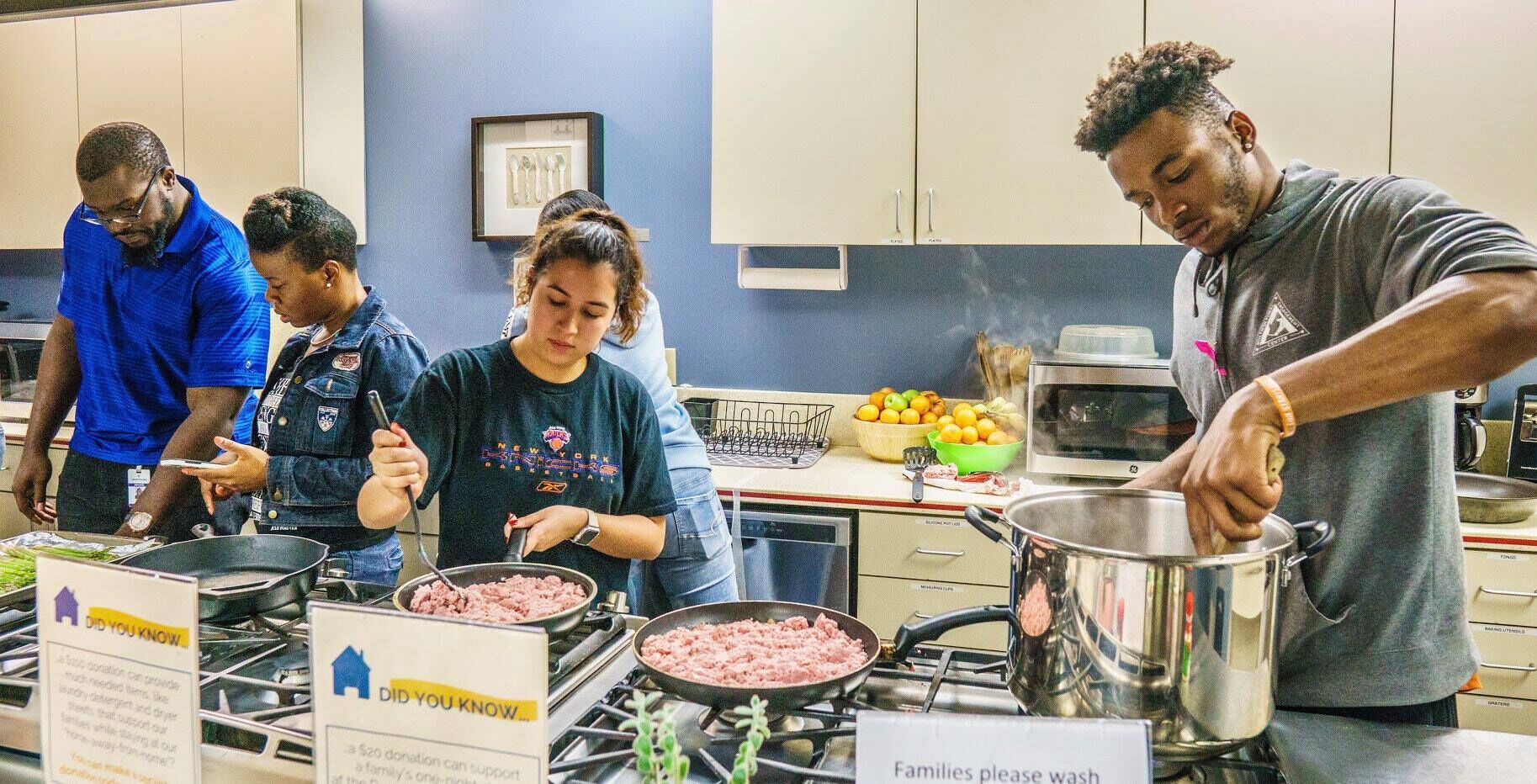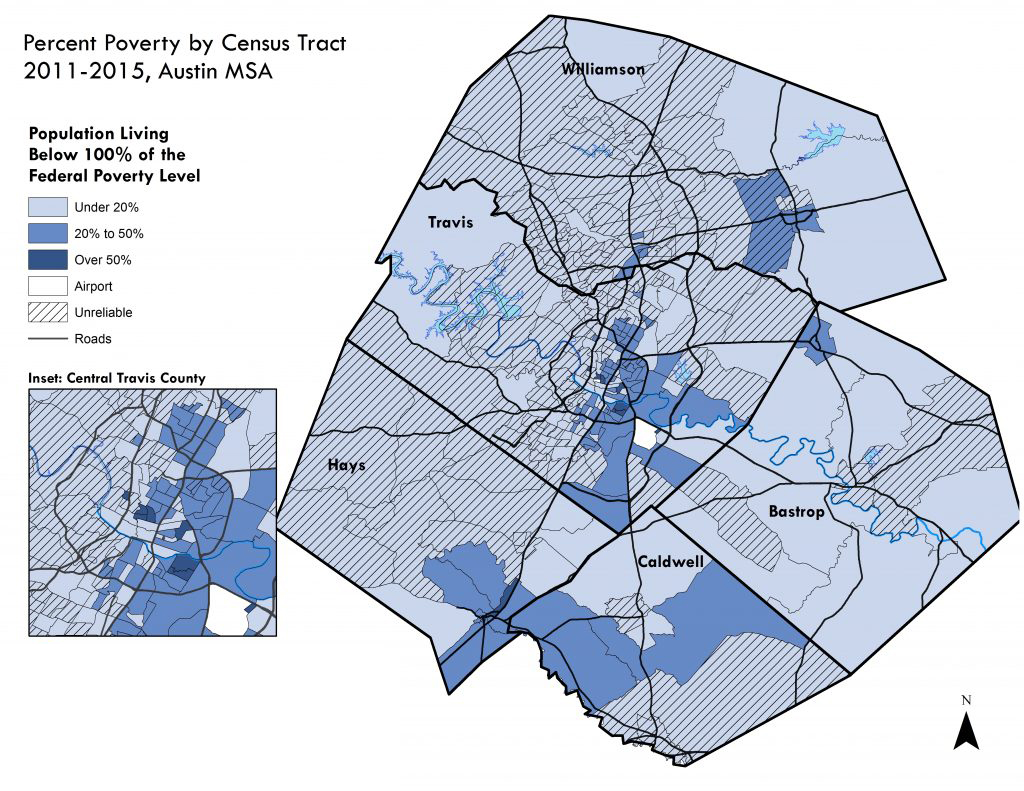
Photo: BLF Foundation
“Glimmer|Austin has a deep desire and a strong devotion to serving and caring for the poor and those disenfranchised in central Texas. Our purpose is to help those individuals transcend the inequity, indignity, and the challenge of living in poverty. We seek to inspire, invest-in, and empower local nonprofit organizations that work together to help break the cycle of poverty in our community.”
–David M. Porter III, Executive Director
In the US, the Federal Poverty Line is
$1,000/month for an individual
$2,000/month for a family of 4
13.5% of the population for whom poverty status is determined in Austin, TX – 124,703 out of 926,865 people – live below the poverty line, a number that is lower than the national average of 14%.
![]()
Map produced by CAN from U.S. Census Bureau, 5-Year 2011-2015 American Community Survey data, (table C17002 – Tario of Income to Poverty Level in the Past 12 Months). Census tracts with high student populations tend to correlate with areas of high poverty. “Unreliable” refers to census tracts in which the Confidence Value of the poverty estimate does not meet at least the Medium Reliability Standard.
This map shows where populations with incomes below the federal poverty thresholds are concentrated across the five-county region.
Source: Community Advancement Network
Why We Do It
“Poverty is the unrelenting daily task of trying to make ends meet. It is the daily stress and worry about whether the car will break down or someone will get ill or your child will need a new pair of shoes. And then having to choose between whether to pay the rent, pay for medicine, or pay for food. Which necessity will have to be sacrificed to pay for the added expense of the unexpected bill? Poverty is the exhausting, unending, time-consuming struggle of juggling and just hoping to make ends meet with no end in sight. Poverty robs you of a sense of security, and it destroys your self-esteem, and your hope for the future. And it has the potential to be hereditary…”
Source: Poverty Program
What We’re Learning About Poverty
Poverty and Race
There are also clear differences along racial and ethnic lines.
Black Americans, as well as Hispanic and Latino Americans, are each about twice as likely to live in poverty as white Americans. Native Americans and Alaskan natives are at an even higher risk — more than one in four live in poverty.
For individuals who belong into more than one of these groups, the risks can be compounded. Young black Americans, for example, are one of the most at-risk groups, with a poverty rate in excess of 30 percent. Among single black mothers, the poverty rate exceeds 40 percent.
Poverty and Children
• 70% are Black or Hispanic
• 64% live with a single parent
Almost one in five (17%) children and youth under the age of 18 in Travis County were living below the poverty level in 2016. Children are more likely to be living in poverty than working-age adults or seniors.
The disparity in poverty rates by race and ethnicity is even greater for the child population than it is for the total population. 33% of Black or African American children and Hispanic children live below the federal poverty level.
About 71% of all children who live in poverty in Travis County are Hispanic. An estimated 41,314 Hispanic children and 8,302 Black children in Travis County live in poverty.
Black and Hispanic children are 5 to 6 times more likely to live in poverty than White or Asian children. Child poverty rates exceed adult poverty rates for Hispanic and Black populations.
Poverty and Homelessness
Though the most obvious form of poverty might be homelessness, there are tens of millions of Americans — many of whom have a job and a place to live — who experience serious problems associated with low incomes. One of these is a lack of immediate access to food. According to the U.S. Department of Agriculture, more than 13 million children — about one in six — in the United States live in families with inconsistent access to food

